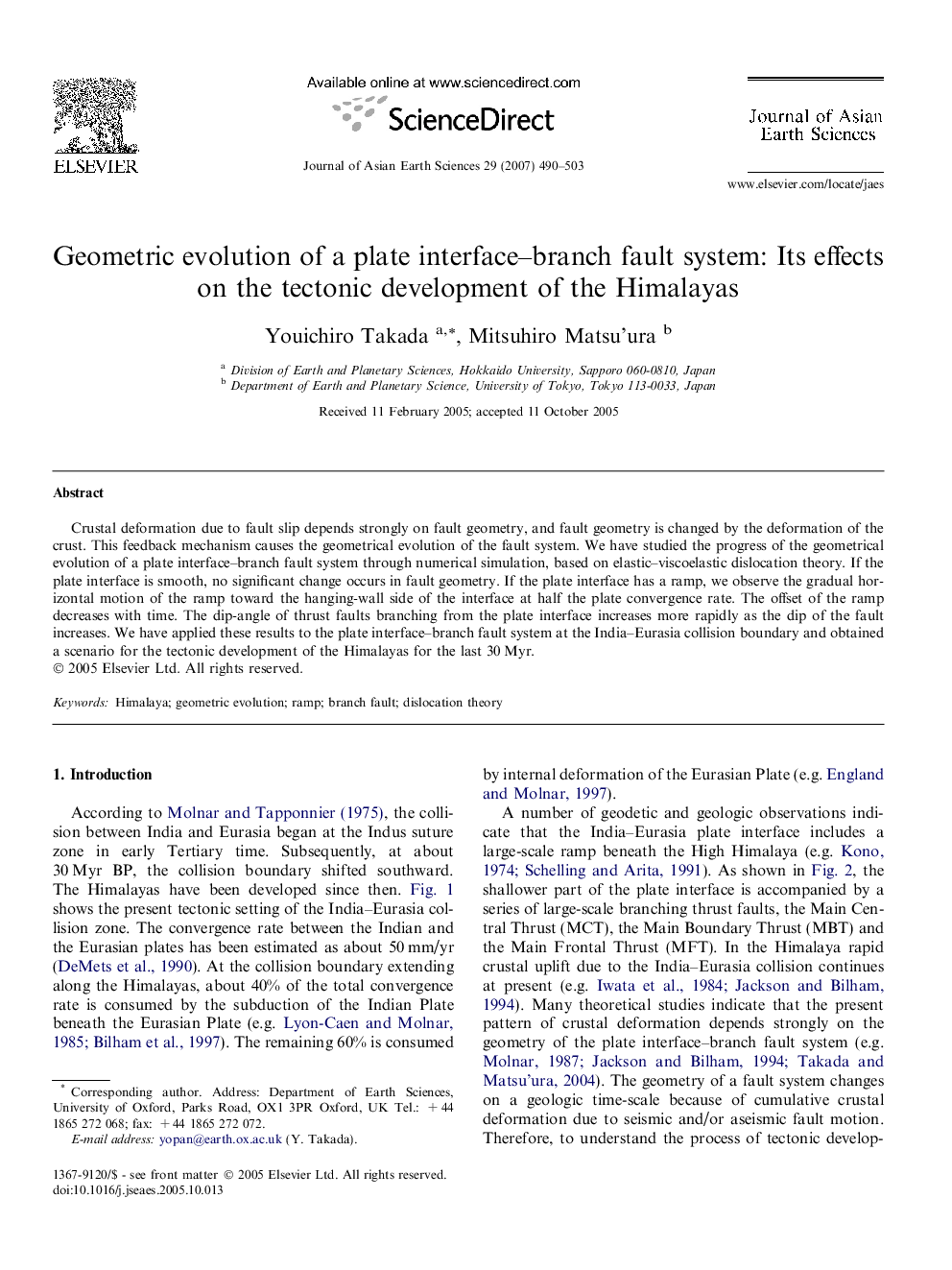| Article ID | Journal | Published Year | Pages | File Type |
|---|---|---|---|---|
| 4732826 | Journal of Asian Earth Sciences | 2007 | 14 Pages |
Abstract
Crustal deformation due to fault slip depends strongly on fault geometry, and fault geometry is changed by the deformation of the crust. This feedback mechanism causes the geometrical evolution of the fault system. We have studied the progress of the geometrical evolution of a plate interface-branch fault system through numerical simulation, based on elastic-viscoelastic dislocation theory. If the plate interface is smooth, no significant change occurs in fault geometry. If the plate interface has a ramp, we observe the gradual horizontal motion of the ramp toward the hanging-wall side of the interface at half the plate convergence rate. The offset of the ramp decreases with time. The dip-angle of thrust faults branching from the plate interface increases more rapidly as the dip of the fault increases. We have applied these results to the plate interface-branch fault system at the India-Eurasia collision boundary and obtained a scenario for the tectonic development of the Himalayas for the last 30Â Myr.
Keywords
Related Topics
Physical Sciences and Engineering
Earth and Planetary Sciences
Geology
Authors
Youichiro Takada, Mitsuhiro Matsu'ura,
